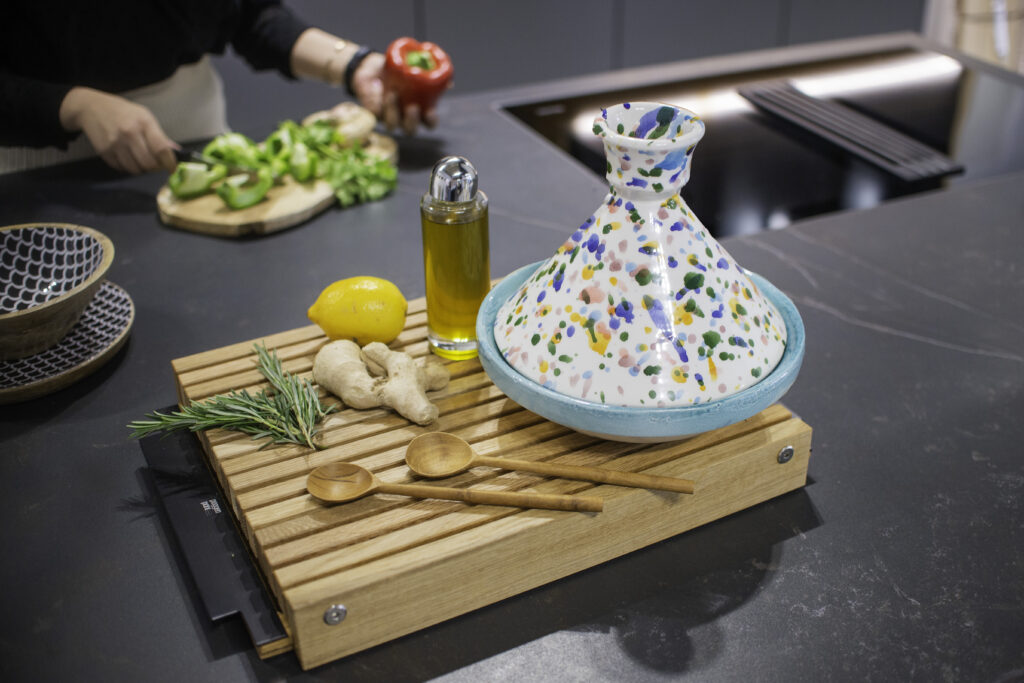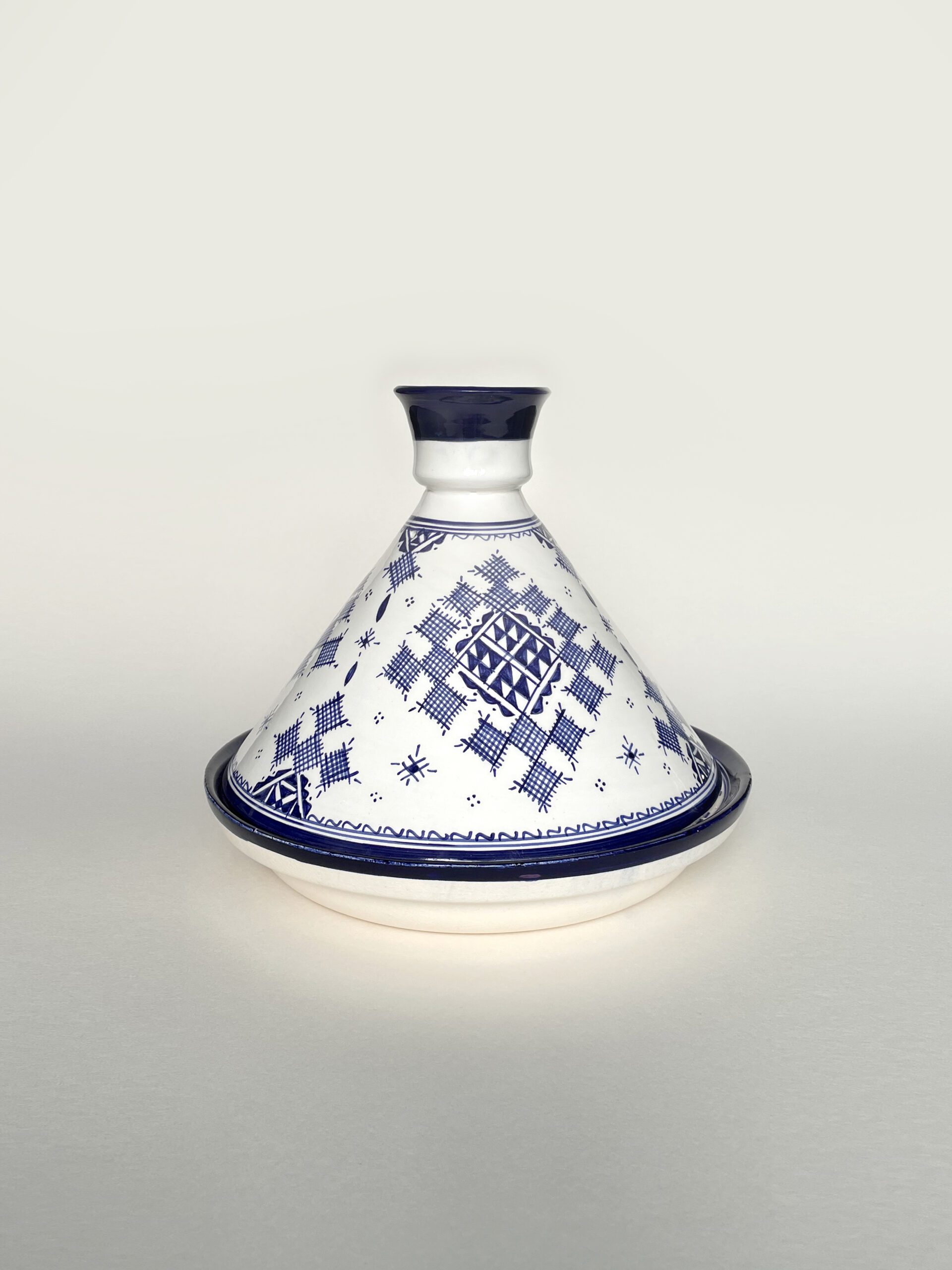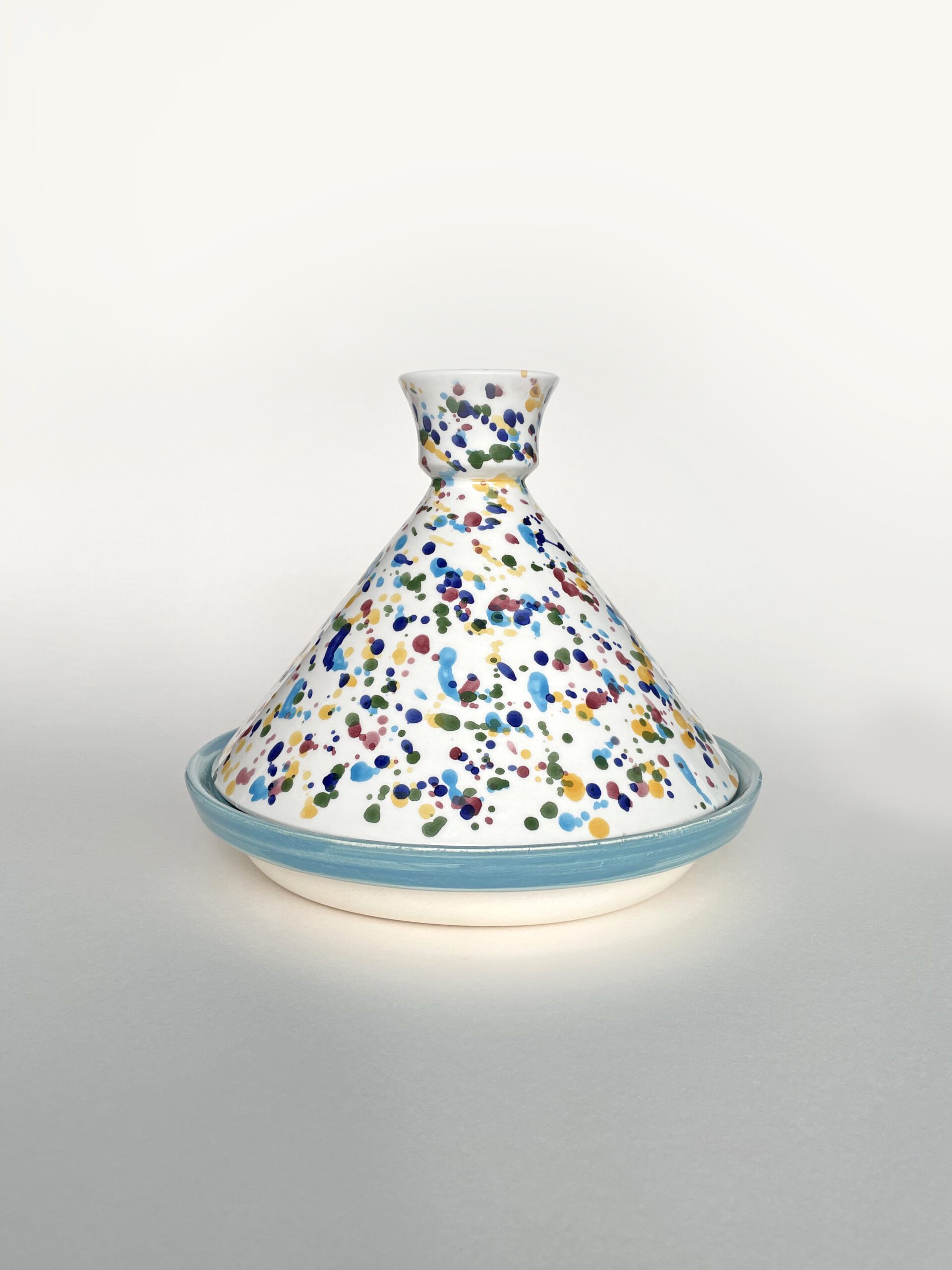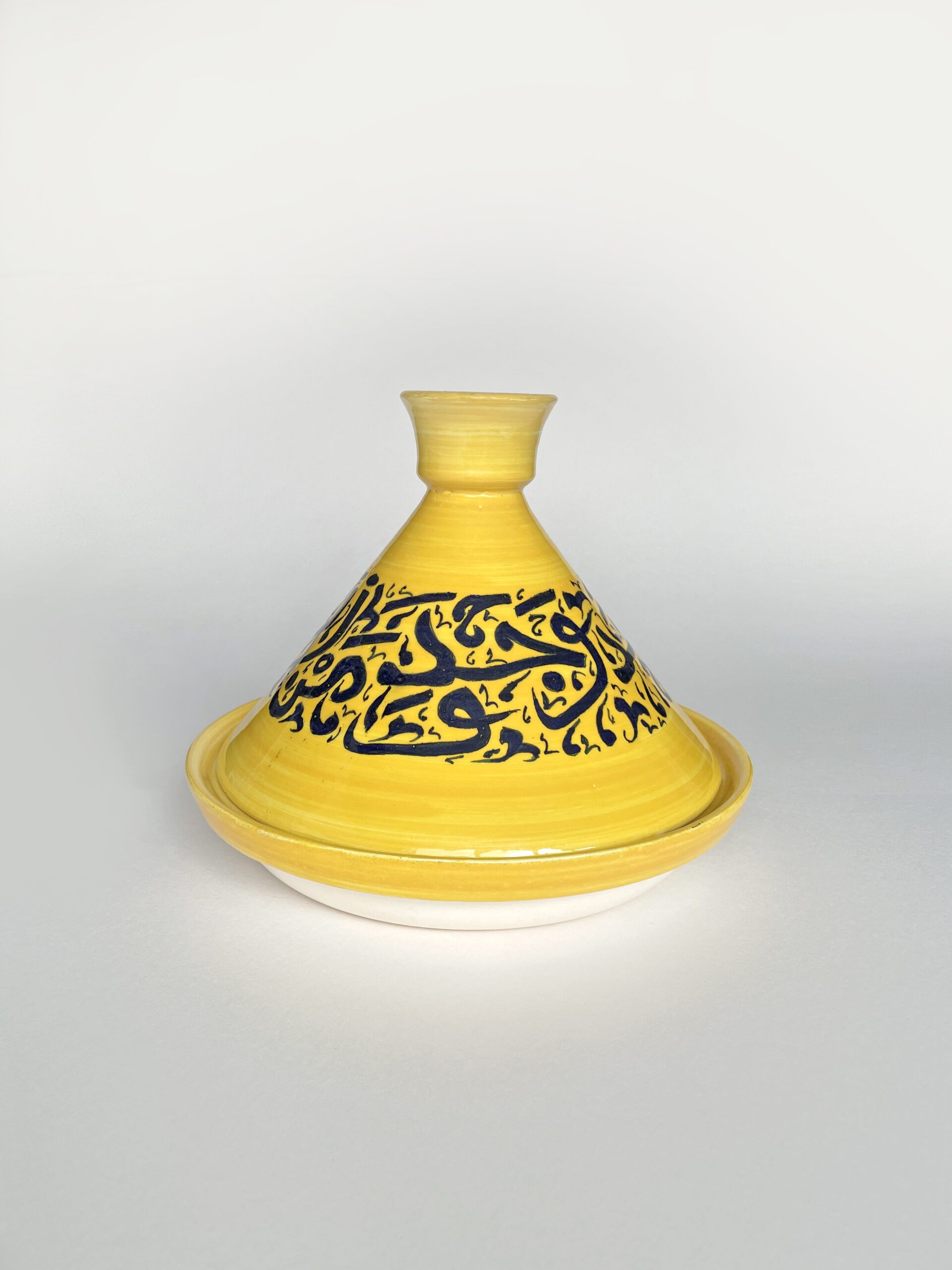It’s intricate, it’s beautiful, and it’s something that evolved with history. The story of tajines dates back to Roman Empire and is known to be invented by Harun al Rashid – the ruler of the Empire.
The tajines from Roman Times are simpler ones and traditionally were just used for serving food and as portable ovens. But are they really the same to date? Undoubtedly not! Today, the Moroccan designs and exclusively beautiful hand-paints have taken over the tajine game. It has leveled it up!
Tajines – Where it all started?
From being the best known Moroccan dishes for cooking delicious meals to stewing flavorsome stews, individuals around the world are using the tajine for cooking delicious tempting dishes every day and any day.
Looking at the tajines from a North African Nomads perspective, the tajine pot was a solution to everyday cooking and used as a portable oven. This lets them prepare food while on the go. This open pot dish has been used traditionally to savor the strong spice taste through slow cooking on an open flame. These pots were initially cooked in the leftover heat of the bakers’ ovens in Morocco.
Culture to culture, household to household, the cooking in Tajines have been evolving day by day – where some people prefer the Qidra Style; the rest tend to go for Muqwalli Style. But what’s the difference between these two?
The original qidra style uses clarified butter to lubricate the pan’s inner surface and add chopped onions for a strong aroma in everyday dishes. On the other hand, the muqwalli style is all about mixing ingredients in olive oil for an enriched flavor in cooked food. It’s incredible how just the variation in the art of adding ingredients can bring a variety of flavors – that’s what’s is the beauty of Tajines!
An Insight into the Tajine World
Tajine pots are adored all around the world and preferred much more than the usual casseroles in Morocco because of the spectrum of taste it brings with it. The traditional tajine comes in a set of two; a circular flat base unit with low sides and a dome–shaped lid. The conical lid style of this stew dish makes this an excellent, flavor-enriching clay pot. It’s all about the steam that is trapped during the slow cooking process; this results in a moist dish with concentrated flavors.
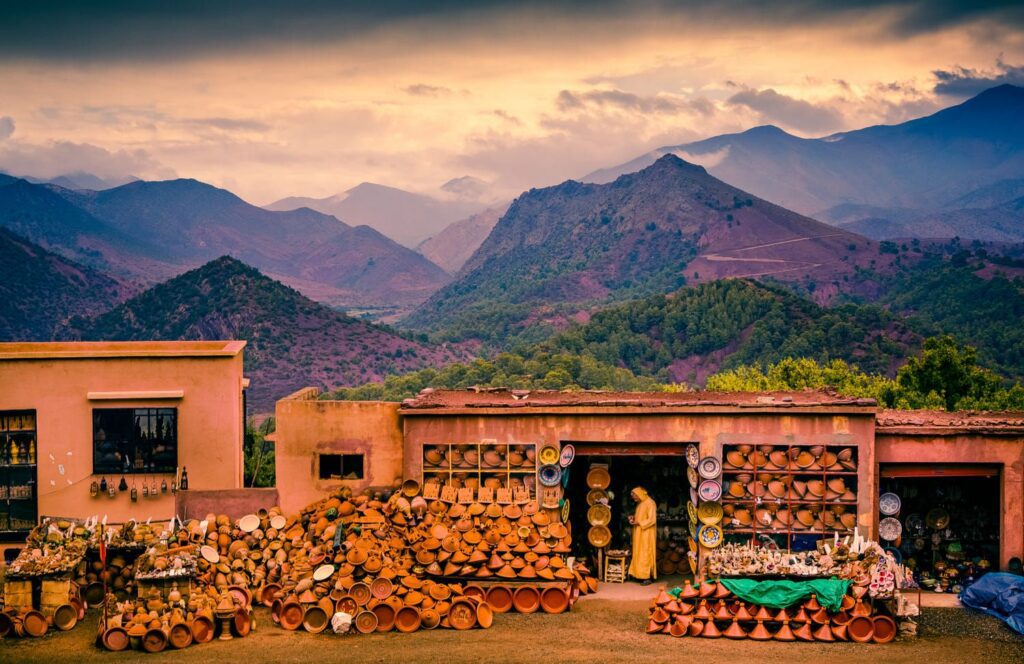
Moroccan Cuisine is known for its beauty of slow cooking in tajines, and that’s the sole reason that’s what in the flavorful ingredients. Apart from this aspect, tajines are known for their flavor-enhancing cycle while the meal cooks – the moisture from the sauce and vegetables goes up the sides of the lid and then infuses back into the ingredients. This continuous cycle adds in that extra flavor, and the dish is stewed to perfection.
What’s your excuse for not going for a tajine, then? It delivers taste, promises beauty, and ensures a healthy meal. Oh, and not to forget, it’s an excellent depiction of Moroccan Art.
From cooking to decoration, the Tajines have switched roles as the times have evolved. In earlier times and traditional household practices, Tajines were generally substituted for a slow cooker and placed over distant charcoal bricks for the temperature to rise slowly, giving plenty of time for the flavor to devour its taste. The sole reason charcoal bricks were used in the ancient days of Tajines is because they had the ability to stay hot for hours, which resulted in a fantastic meal at a low cost. Isn’t that amazing?
But that’s not it; before you get too involved in the conventional uses of Tajines, let us amaze you with the beauty of Tajines in today’s world. The Moroccan artists have taken over the designing on for these clay pots, and now they serve much more than just the cooking purpose. The painted and glazed pots are now used as decorative earthenware to serve food to guests all around the world, and today, it’s just getting even more intricate with the passing time.
Frim functional cooking vessels to just decorative items, tajines are a staple in most Moroccan houses around the globe. It’s not the geographical location that ensures the presence of this pottery but the cultural influence and the strong affiliation with the traditional roots.
As the times progressed and the awareness for tajines increased, these pots have been broadly classified into two main categories. But what’s that? Some tajines are more centered upon decoration and detailed paintings to enhance their beauty, while the others are for cooking and are more heat tolerant. The serving ones are beautifully decorated and cannot be exposed to heat. So, next time you go out to purchase a tajine pot, you need to understand the purpose you want to buy them for. The beautiful details are what most people today go for! The ZIRI Tajines are the few Tajines that can be used for both purposes; for decorating as well as cooking – that is what we consider our unique selling point! Which one of the two are you?
Cooking in Tajines – The two Approaches
Further moving onto how the dishes are cooked in them, as highlighted earlier, there are two main approaches to cooking food in these; The Original Qidra Style & The Muqwalli Style. But that’s not it! The cooking styles are not just restricted to these; they come with hundreds of variations that are distinct all around the globe.
There are few guidelines that one needs to take care of while cooking in tajine pottery. Right from the start to the point it’s ready to be served, it comes with its own do’s & don’ts.
First, yet the most important one, make sure to season the pot before you start preparing your favorite meal. This is an essential step to increase the durability of the tajine and also remove the taste of raw clay in case your tajine pot is unglazed! To progress on, the steps are pretty simple; after you’re done with seasoning your tagline, it’s time to lubricate it – clarified butter or olive oil, the choice is yours! Next, add in meat, poultry, or fish, and then season with spices. After you’re done adding the meat and the spices, garnish the dish with your preferred vegetable and add a generous amount of water or bone broth for it to cook. This is the most contemporary way of cooking tajine, you can always mix and match.
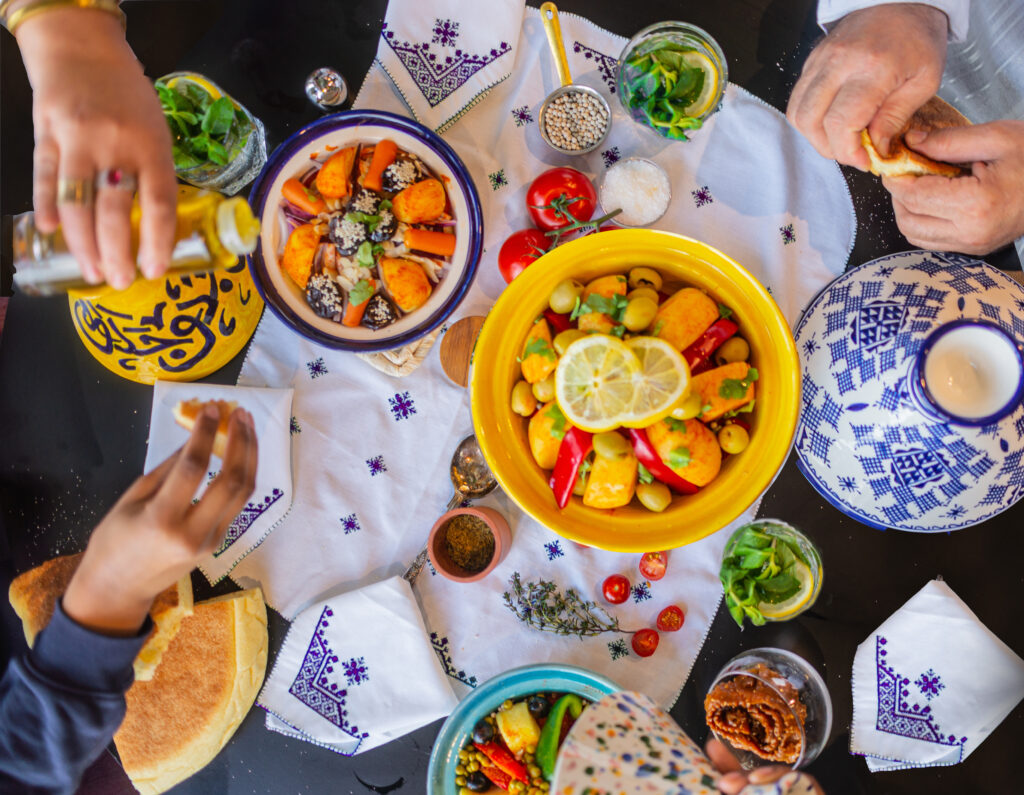
You can also make use of a diffuser, place it between the stove and earthenware. This distributes the heat evenly and gives enough time to the dish to simmer on low heat.
Why are Tajines still perceived as the ‘Mysterious Cooking Ware’?
Oh, it’s simple but it’s mysteriously beautiful at the same time – let us dig deeper into the details! Tajines are more like ‘the oven containing the food’ but why’s that? Cooking in Tajines is an art of excellence; you can eat from the same pot as you have cooked your food in. Oh & ZIRI Tajines make the experience so much more beautiful! So in a nutshell in a Tajine your food is steamed and baked simultaneously and is consequently a lot too tender!
The Moroccan Cuisine
Tajine pots are closely associated with Moroccan Cuisine, and the Moroccan Tajine is the most known all around the world. However, this pot is a staple around the world today! Some affiliate it with their culture while other love these ceramic pots because of the beauty it holds.
Talking about the different nationalities that have been using this pottery, these include Moroccans, Algerians, Tunisians, Libyans, French individuals and Americans. Isn’t it beautiful how people separated by their geographical locations unite together on the same interest, which is the use of Tajine?
We all know how Moroccans are in love with slow-cooked savory items. Their staple is generally either sliced meat, poultry, or fish mixed with vegetables and fruit. As it’s all about the variations, different households come up with contrasts, but a Tajine is a must on the spread. Due to its strong flavor of spices, Moroccan tajine is often referred to as masala curry or pad Thai. Moroccan tajine is loved by everyone around and enjoyed too!
Tajines – How are they made?
Moving onto how tajines are made, tajine pottery is generally made on a pottery wheel and handmade to perfection. It is sometimes baked in an oven for increased durability and glazed for cooking purposes.
These have been originated from Morocco, and that’s where they are made. Moroccan tajines are ideal for various tajine cooking – they are known for their beautiful earthy flavor and enrich the deep flavor of spices.
This isn’t it; Moroccan culture and the people residing there love Tajines as decorative items. Not only does it play a role in cooking food as a daily matter, but they love it when placed on the dining table just as a decorative element. It comes in vast colors, and the original can also be painted to match your room’s hues – be it abstract or traditional art. It can all be done! Oh & you know what the new hype about these Tajines is? The ZIRI Tajine Pots are the recent talk of the town. Which one would you like to go for?
The Material of Tajines
Wondering what tajines are made of? Let us give you a deep insight into the material. Starting it off from the traditional tajines, these were made of earthenware and were not glazed. But is it the same 100 years down the road? I don’t think so! Obviously not!
Tagines of today are much more than the traditional earthenware; they are made of different types of materials. Generally speaking, these Moroccan cooking vessels are made of ceramic or unglazed clay. But the painting and decorations are over the top! Isn’t that amazing? You can serve your favorite dish in the most beautiful tajine pot ever.
Rediscover the love for Tajines with ZIRI
Have you learned enough about the Tajines? We at ZIRI believe in giving you the ultimate best and connecting you with your roots. As much as it has evolved over time, the importance of Tajines is as special to date. These are handmade, intricately detailed, and amazingly beautiful – it’s the specialty of Morocco. A glimpse into this article, and it’s time you rediscover your love for these tajines. ZIRI, our brand means “moonshine” – the connection between moonshine and our selling product is the way Tajines and food lights up the faces of people around.
What’s your take on this? One thousand years later, would you still be willing to purchase one and cook your food in a Tajine? Or maybe use this as a decorative element around the house? Worry no more, because you are just one click away with discovering your love with Tajines – explore now at ZIRI!
